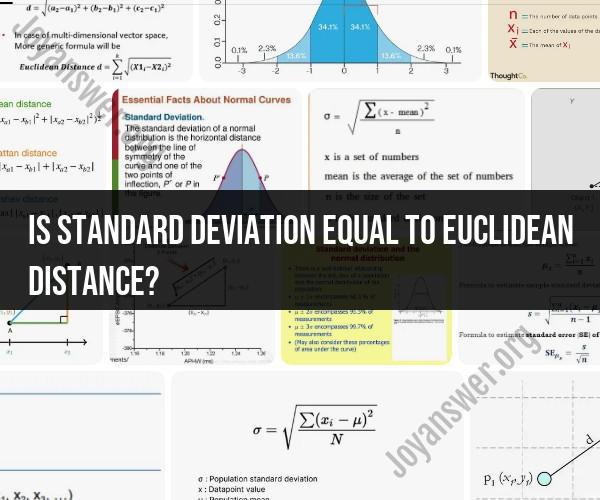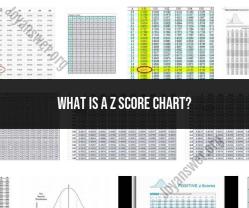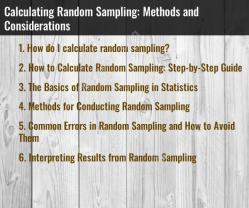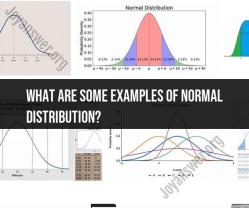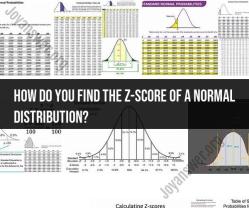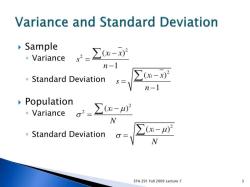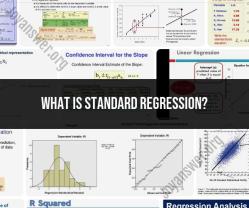Is standard deviation equal to Euclidean distance?
Standard deviation and Euclidean distance are two distinct concepts in statistics and mathematics, each serving different purposes and having different interpretations.
Standard Deviation
Definition: Standard deviation is a measure of the amount of variation or dispersion in a set of values. It quantifies how much individual data points deviate from the mean (average) of the dataset.
Formula: For a dataset with values and mean , the standard deviation is calculated as:
Purpose: Standard deviation is used to understand the spread of data points around the mean. A high standard deviation indicates that the data points are spread out over a wider range, while a low standard deviation indicates that they are closer to the mean.
Euclidean Distance
Definition: Euclidean distance is a measure of the straight-line distance between two points in Euclidean space. It is derived from the Pythagorean theorem.
Formula: For two points and in 2-dimensional space, the Euclidean distance is:
For higher dimensions, the Euclidean distance generalizes to:
Purpose: Euclidean distance is used to measure the direct distance between two points in space. It is widely used in fields such as geometry, machine learning (for clustering and classification), and computer vision.
Key Differences
Purpose and Interpretation:
- Standard Deviation: Measures the spread of data points around the mean in a single dataset.
- Euclidean Distance: Measures the straight-line distance between two points in multi-dimensional space.
Application:
- Standard Deviation: Used in statistical analysis to assess the variability of data.
- Euclidean Distance: Used in geometric contexts and algorithms to compute distances between points.
Units:
- Standard Deviation: Expressed in the same units as the data points.
- Euclidean Distance: Expressed in the units of the coordinate system.
Example to Illustrate Differences
Consider a dataset:
- Standard Deviation: Calculates how spread out these numbers are from their mean.
- Euclidean Distance: If we take two points, say and , the Euclidean distance measures the straight-line distance between these two points in 2-dimensional space.
In summary, standard deviation and Euclidean distance serve different purposes and are not interchangeable. Standard deviation assesses the variability within a single set of data, while Euclidean distance measures the straight-line distance between two points.
Is there a relationship between standard deviation and Euclidean distance in statistical analysis?
Yes, there's a conceptual relationship between standard deviation and Euclidean distance in statistical analysis, but they measure slightly different things.
Standard deviation: This is a measure of how spread out the data is relative to the mean (average) in a single variable dataset. It tells you how much, on average, the data points deviate from the mean.
Euclidean distance: This refers to the straight-line distance between two points in space (including one-dimensional space for a single variable).
Here's how they connect:
Standard deviation can be seen as a special case of Euclidean distance: Imagine each data point and the mean as separate points on a number line (one dimension). The standard deviation essentially calculates the average Euclidean distance of all the data points from the mean.
They both deal with spread: Standard deviation focuses on the spread of a single variable around its mean, while Euclidean distance is a more general concept applicable to measuring distance between any two points in multidimensional space.
However, there are key differences:
- Unit of measurement: Standard deviation is measured in the same units as the original data, while Euclidean distance is simply a unit of distance (e.g., meters, centimeters).
- Multiple variables: Standard deviation applies to a single variable, while Euclidean distance can be used to calculate the distance between points in higher dimensional spaces with multiple variables.
In essence: Standard deviation borrows the concept of Euclidean distance to quantify the spread of data around the mean in a single variable scenario.
